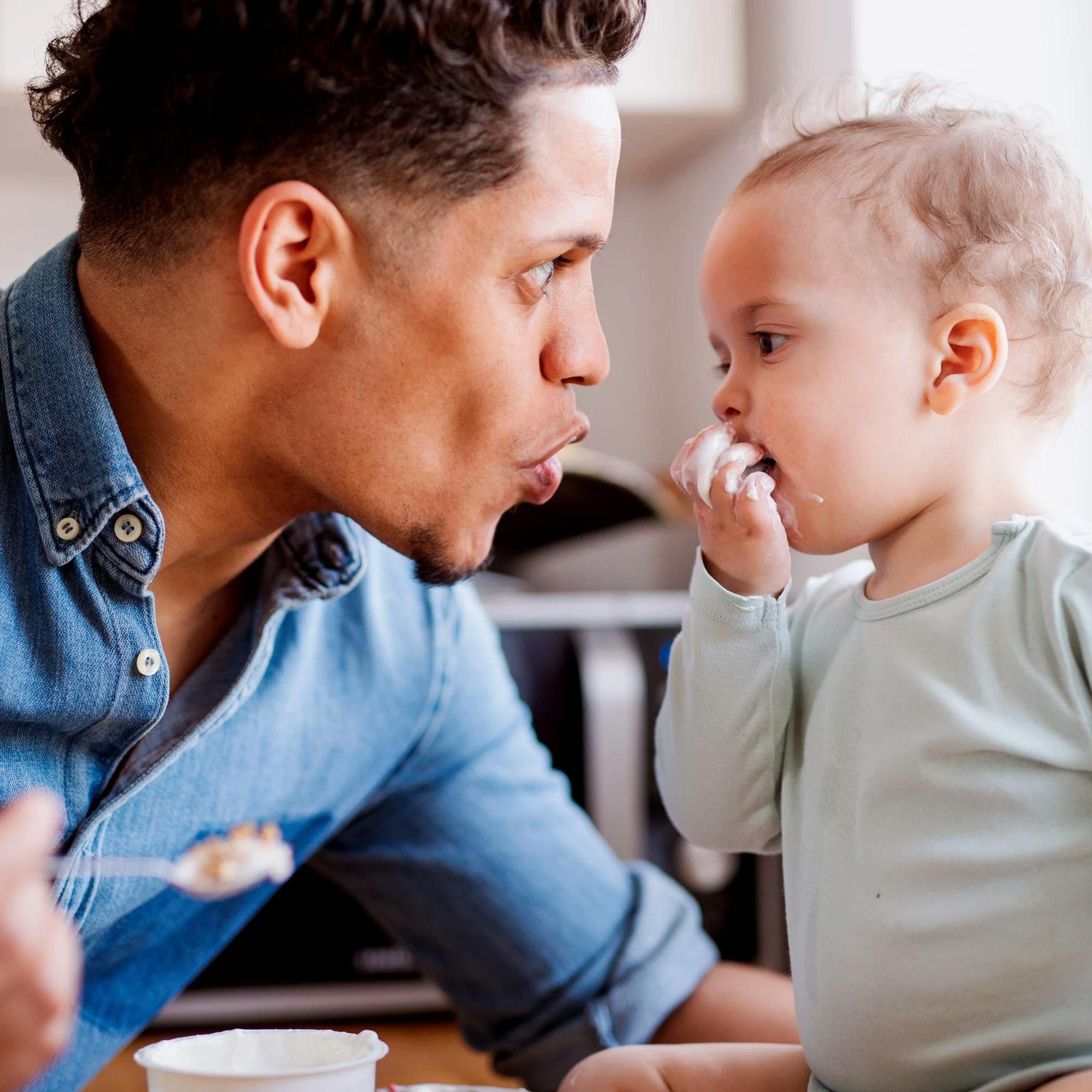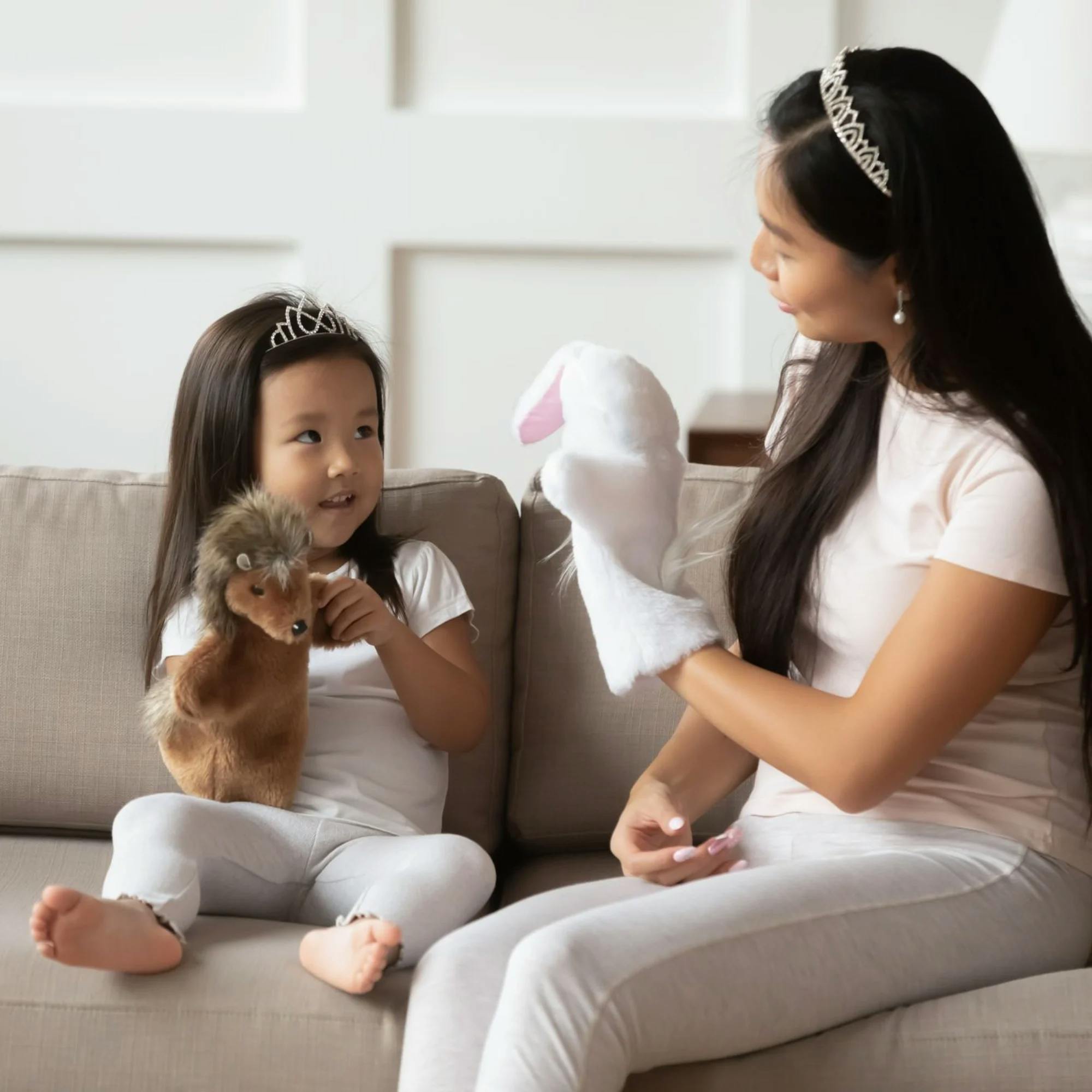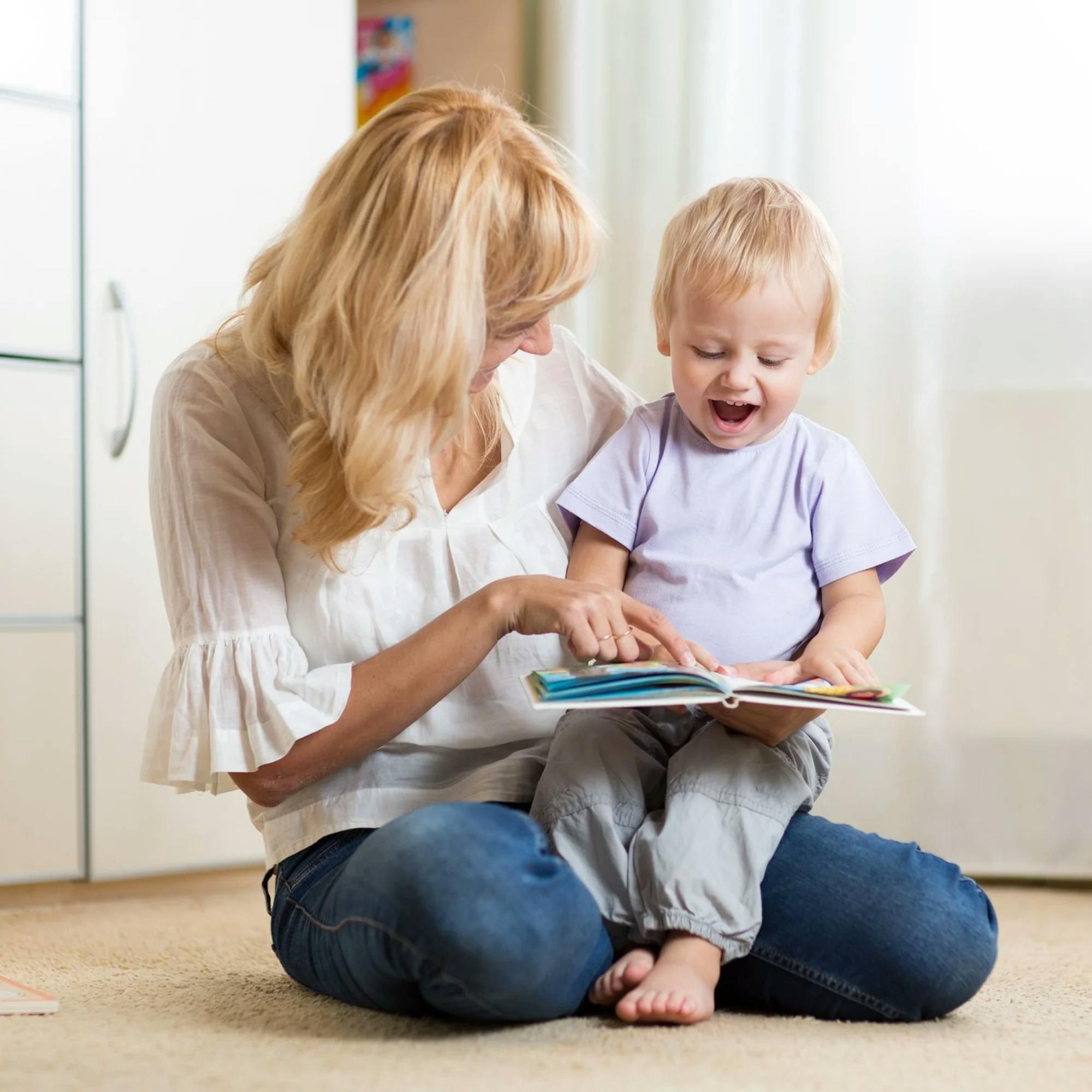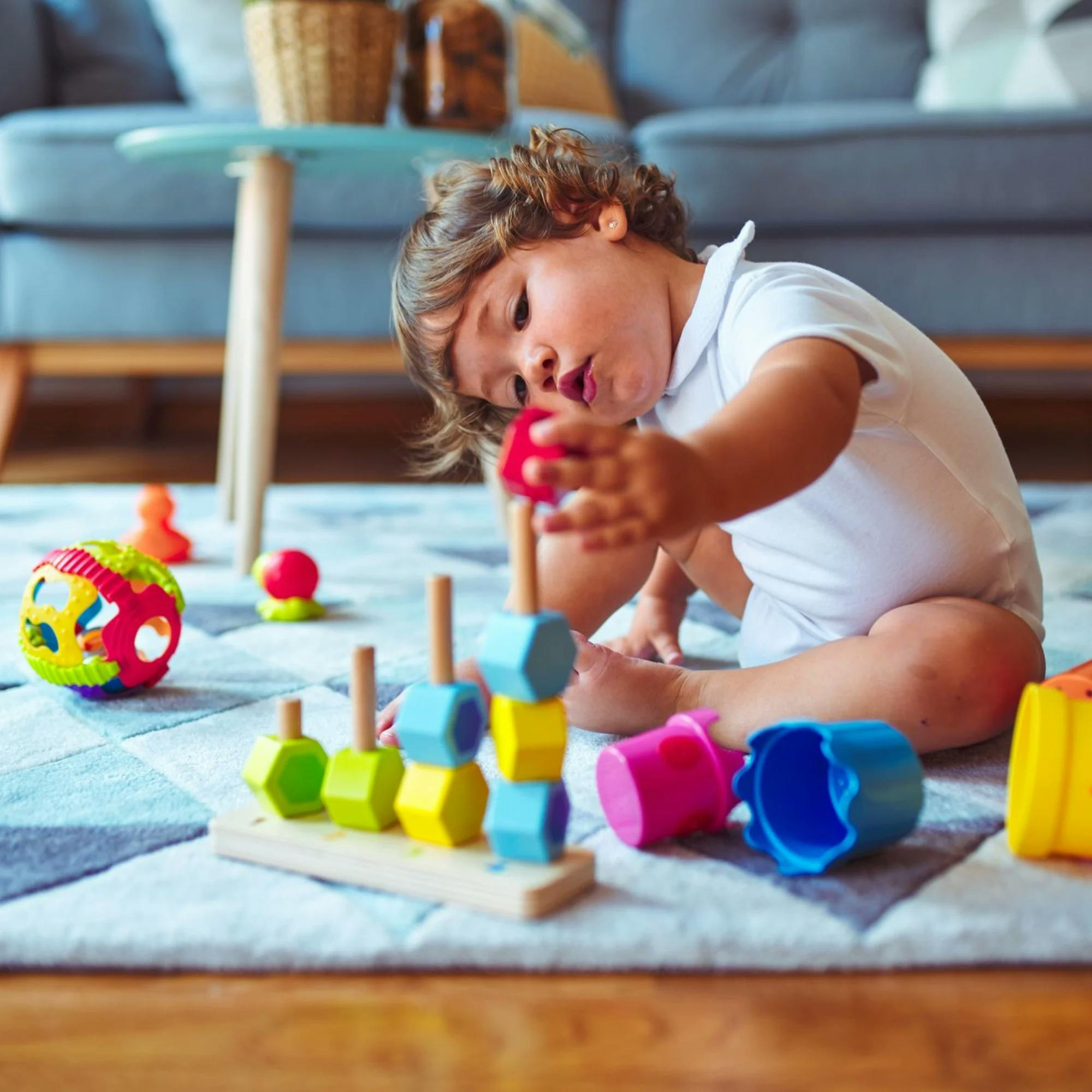
Fun Songs to Boost Your Child's Language Skills
 Abby Barnes, M.S., CCC-SLP
Abby Barnes, M.S., CCC-SLP
Children love to sing songs and nursery rhymes. But did you know songs are also a wonderful way to boost your child's early communication abilities?
Read on to learn how music can promote language development and which songs to start singing along with your child today!


Music and songs help with these language-building skills
Joint attention
Before you start singing a song, it's important for both you and your child to shift your attention toward each other and the activity you're doing together. This is a vital communication skill called joint attention.
In the simplest terms, joint attention (sometimes referred to as shared attention) is when two people pay attention to the same thing at the same time. Joint attention between communication partners is gained through gestures, vocalizations, and words.
As you and your child sing together, make sure your child is paying attention to the song. If not, you may need to gesture or verbally redirect them to the task. If they have a hard time with this, no problem! Just provide gentle reminders to help them keep their focus.
Vocabulary expansion
Another important skill gained through singing is new vocabulary. Just by singing together often, you can help your child learn and memorize new words! This is a major bonus when it comes to expanding their language and what they can express verbally.
Imitation
Songs and nursery rhymes also motivate children to imitate words. Having your child strictly imitate what you say may feel a bit redundant, but it's super helpful. To mix it up, encourage your child to imitate the words in songs.
One thing that many people don’t know is that gesture imitation is important for strong verbal imitation skills. A child first has to understand how to participate in a task and imitate gestures, such as pointing or waving, before they understand the process of imitating verbal sounds and words. Songs with movements and hand motions are a great way to work on gesture imitation.
Language-building songs to practice at home
Try singing these popular songs with your child at home. Not only are they fun, they'll help your child develop speech and language skills.
1 "The Wheels on the Bus"
This song is repetitive, which helps children learn the words and sentences used again and again in each verse. Sing this song often with your child to help them learn the words!
The song uses hand motions paired with each phrase, which is perfect for gesture imitation. Help your child imitate these hand motions by modeling the gestures for them as you sing.
The song also teaches some early concepts, such as “up and down” and “open and shut.” Another bonus!
2 "Old MacDonald"
This song is also very repetitive--which is a good thing! Each verse uses the same words, except for the names of the animals. As we discussed, repetition is key when it comes to helping children learn and memorize new words.
This song teaches the sounds different animals make. It's common for children to begin imitating animal sounds before even imitating words! This is a great song to target various sound productions with your child.
Show your child pictures or toys of the different animals mentioned in the song. This provides great visual cues to help your little one learn the names of different animals.
This song has an easy beat that children can clap along to. Clapping targets gesture imitation, as well as helping your child begin to understand rhythm.
3 "Itsy Bitsy Spider"
This song uses rhyme in some of the lines. Practicing rhyming helps children improve in their phonological awareness, preparing them for the early days of reading.
This song also uses big gestures and hand motions. Children love getting their whole bodies involved when singing songs--and it can be extremely motivating!
4 "Head, Shoulders, Knees, and Toes"
This song is a super fun and engaging way to help your child learn all about different body parts! It works on identification (pointing to different body parts) as well as naming.
“Head, Shoulders, Knees, and Toes” can be sped up easily each time it's sung. You can work on concepts like “slow" and "fast” with your little one by singing the song using different tempos.
This song also contains some rhyming words, which is great for phonological development.
5 "Row, Row, Row Your Boat"
“Row, Row, Row Your Boat” also uses rhyming. As mentioned, rhyming is great for phonological awareness, which is a useful preparation for learning to read.
Clapping to the beat of this song will help your child learn rhythm. It may also bring awareness to each of the words being sung, helping with their vocabulary growth.
6 "Twinkle, Twinkle, Little Star"
“Twinkle, Twinkle, Little Star” is a song about nighttime, and it's often sung when helping children go to sleep. This is a great song to help your child begin to understand the concepts of “day” and “night.” Ask your child questions like, “When do we see the stars?” or “When is the sky dark?” after you sing together to help them understand this important concept.
This song uses words that target early spatial concepts (up) and shapes (diamond). Show your child what each of these words mean by using the hand gestures that go along with the song.
This song also uses rhyming as well as hand motions. These are excellent skills to help expand your child's language abilities. You can learn the hand motions in the video below.
7 "Open, Shut Them"
This song may not be quite as well known, but trust us--it's great! And more important, children love it.
“Open, Shut Them” can help children learn the meaning of the concepts "open" and "shut" by using hand gestures.
The video below provides some extra verses. These use action words like “walk,” “shake,” “roll,” and “blow.” This is a fun way to help teach your little one different verbs!
One of the last verses uses the terms “loud” and “quiet” and is sung in correlating volumes. This is an awesome way to teach your child all about how to be loud versus quiet.
Tips for singing songs with your child
When singing with your little one, there are plenty of techniques you can use to help them attempt to say new words. For example, as you sing with your child, pause at different points in the song and have them fill in the blank. Here are some examples.
“Row, row, row your boat, gently down the __________.”
“The wheels on the bus go ______.”
Check out this quick video to watch one of our speech therapists demonstrating this technique! You can also use hand gestures as a substitute for saying the word. The hand gesture may help cue your child to use the associated word on their own!.
Repetition of the same songs is great for children. Hearing songs over and over again helps new words and concepts stick, so be sure to sing the same songs often. By practicing the songs in this article, you'll be sharing some quality bonding time with your child, teaching them valuable language skills, and having fun while you're at it!
How Expressable Can Help
Concerned your child isn't reaching age-expected milestones? Looking for communication support from a professional? Expressable is a national online speech therapy practice serving children and adults. We treat all major areas of communication and feeding, offer flexible hours including evenings and weekends, and accept most major health insurance plans. We’re proud to have earned more than 3,000 5-star reviews from our clients (4.9/5 average).
Our therapy model is centered on parent and caregiver involvement. Research proves that empowering caregivers to participate in their loved one’s therapy leads to better outcomes. That’s why we combine live, 1-on-1 speech therapy with personalized education and home practice activities for faster progress.
Communication is more than words. It’s how we share how we feel and show who we are. We’re here to help you or your child do just that.












